Topshop is currently owned by Heartland, which picked it up from ASOS after Topshop went through some pretty big changes, like entering administration. Can you believe that? ASOS bought it for a whopping £265 million in early 2021! They saw potential, but then Heartland swooped in in April 2024, acquiring a 75% stake for £135 million to revitalize the brand. Exciting stuff, right? Plus, ASOS still holds a small chunk. So what's next for Topshop? They're working on bringing back their brand online and maybe opening new stores. You'll want to stick around for what's coming next!
Topshop's Ownership History
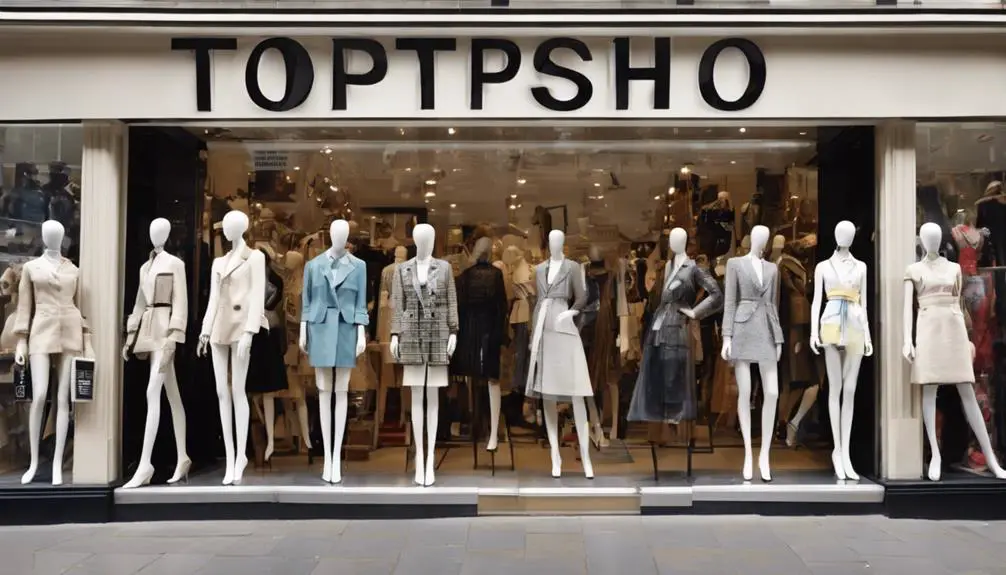
Topshop's ownership history reflects its dynamic journey through the fashion industry, starting from its launch in 1964 as a brand extension of Peter Robinson. From the get-go, it was part of the Arcadia Group, founded by Montague Burton. Fast forward to 2012, and you see Philip Green selling a 25% stake in Topshop for a whopping $805 million! That was a major highlight, showing just how valuable the brand was at the time.
However, like a rollercoaster, things took a downturn. In November 2020, Topshop entered administration, which led to a significant acquisition by ASOS for £265 million in February 2021. But wait, there's more! In April 2024, ASOS sold a 75% stake in Topshop to Heartland, part of Bestseller, for £135 million.
Now, Topshop is under the ownership of Heartland, aiming for some serious brand revitalization in the retail market. Isn't it fascinating how a brand can bounce back? With their fresh approach, who knows what exciting trends Topshop will bring next!
Acquisition by ASOS
When ASOS acquired Topshop, along with Topman and Miss Selfridge, for £265 million on February 1, 2021, it marked a significant shift in the brand's trajectory following the Arcadia Group's administration. During its evolution, Topshop became known for its collaborations with emerging designers and vintage clothing education resources, which contributed to its appeal among fashion enthusiasts. You might be wondering what this means for the future of Topshop, right? Well, ASOS took a bold step in the retail world, diving into a brand with a rich history.
The acquisition included an extra £65 million for stock, which helped keep around 300 employees on board. However, they also put 2,500 jobs at risk due to store closures. Yikes! That's a big number. After the acquisition, Topshop's valuation took a hit, dropping from £265 million to £180 million. But don't lose hope just yet!
ASOS has big plans to relaunch a dedicated Topshop website by summer 2025, focusing on a digital-first approach. This means more online shopping fun for you! Plus, ASOS sold a 75% stake in Topshop for £135 million in 2024, aiming to tackle its net debt. It's a rollercoaster, but the ride's just getting started!
Financial Implications of Ownership

Steering through the financial implications of ASOS's ownership of Topshop reveals a mix of challenges and opportunities. When ASOS acquired Topshop for £330 million, it seemed like a bold move. But fast forward to April 2024, and things took a turn. They sold a 75% stake in Topshop for £135 million, trying to cut down their £348 million debt. Ouch!
Now, Topshop's valuation dropped to £180 million, meaning ASOS lost some of that initial shine. You might wonder, what does this mean for profits? Analysts predict that the royalties from the new owners could hit ASOS's profits by £10 to £20 million this year. That's a hefty amount!
But here's the twist: after announcing the sale, ASOS's shares jumped by 20%. It seems the market's feeling optimistic about this restructuring strategy. So, while there are definitely financial hurdles, there are also signs of recovery. ASOS is juggling the balance of debt and profits while trying to keep Topshop relevant. Isn't it fascinating how ownership can shift the financial landscape so dramatically?
Brand Management Strategies
Effective brand management strategies have become essential for Topshop in the wake of its acquisition by ASOS. You see, the fashion landscape is always changing, and brands need to adapt. Topshop and Topman are now focusing on becoming digital-first businesses, which is a smart move. But what does that mean for their brand management? Here are a few key strategies they're using:
- Brand Consolidation: They've merged standalone Topman stores into combined Topshop-Topman locations, streamlining operations.
- Visual Identity: A fresh look has been launched on ASOS.com, emphasizing quality and modern appeal.
- Store Performance Optimization: By reviewing locations and closing underperforming outlets, they're improving overall sales.
- Focus on Digital: Shifting to online platforms enhances accessibility and aligns with current shopping trends.
- Learning from the Past: The BrandMAX strategy from the Arcadia Group taught them valuable lessons about managing underperforming brands.
With these strategies, Topshop and Topman are not just surviving; they're thriving! So, if you're a fan of stylish clothing, keep an eye on how they evolve under ASOS's ownership. Exciting times are ahead!
Future Prospects and Challenges
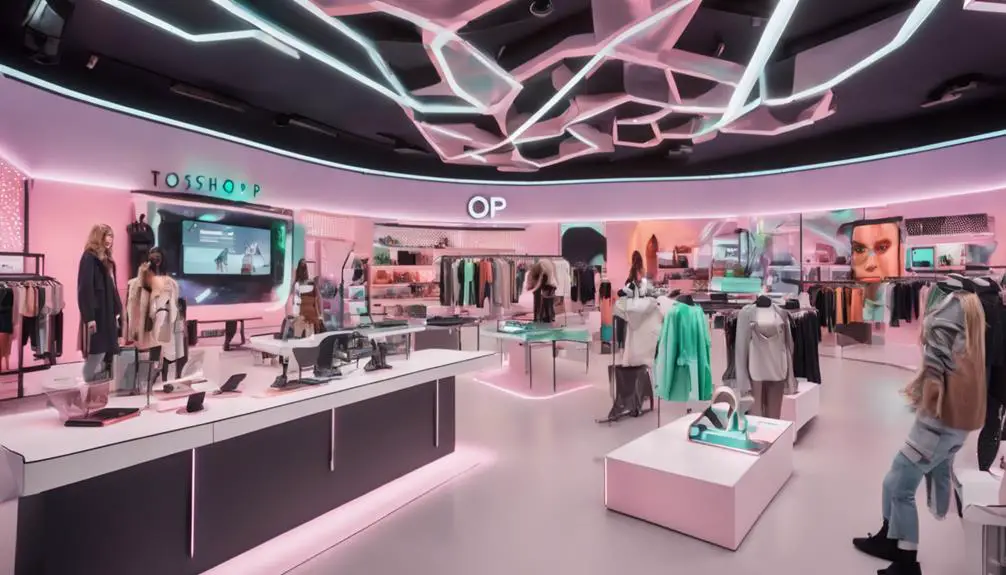
Looking ahead, Topshop faces a mix of promising prospects and significant challenges in the evolving retail landscape. After Asos sold a 75% stake to Heartland, this strategic move for £135 million aims to cut down Asos's net debt. But what's next for Topshop? As demonstrated by the rapid expansion of Old Navy in the 1990s, leveraging market trends and consumer preferences will be vital for their success.
Excitingly, the dedicated Topshop website is set to relaunch by summer 2025. This means they're really working on boosting their online presence, which is super important these days! Plus, there's talk of opening new stores, although right now, you can only shop online or at select Nordstrom locations.
But here's the kicker: Asos still holds a 22.5% stake in Topshop, so they're not completely out of the picture. This ongoing involvement could help guide the brand in these tricky times.
The retail sector is changing fast, and Topshop needs to adapt to keep up with shifting consumer behavior. They'll need to find ways to enhance profitability while overcoming these challenges. So, can Topshop rise to the occasion? Only time will tell, but we're all rooting for them!
Frequently Asked Questions
Who Bought Out Topshop?
You'll learn that Topshop's acquisition reflects retail brand evolution amidst fashion industry shifts. As fast fashion impacts consumer behavior, the new owners focus on online shopping trends and sustainable practices, embracing vintage clothing resurgence and celebrity collaborations.
Who Was the Owner of Topshop?
You'll find Topshop's history fascinating, from its founders' vision to various acquisitions shaping its brand evolution. Its market strategy, celebrity collaborations, and fashion trends cater to diverse demographics, driving global expansion and innovative product lines.
Does Topshop Still Exist?
Yes, Topshop still exists! You can explore Topshop online for exciting collections and collaborations. The brand's revival focuses on digital marketing strategies to compete with rivals while maintaining its fashion-forward identity and quality.
Does Nordstrom Own Topshop?
Nordstrom doesn't own Topshop outright, but its strategy focuses on enhancing Topshop branding through fashion partnerships, boosting online sales, and adapting to market trends, all while fostering customer loyalty and sustainable supply chain practices.
Conclusion
So, there you have it! Topshop's been through quite a ride, hasn't it? From its ownership changes to ASOS stepping in, it's all about adapting and thriving in the fashion world. With clever brand strategies and future challenges ahead, who knows what's next? Will Topshop keep dazzling us with trendy styles? Only time will tell! But one thing's for sure, it's definitely a brand to keep an eye on. Fashion lovers, are you ready for what's next?
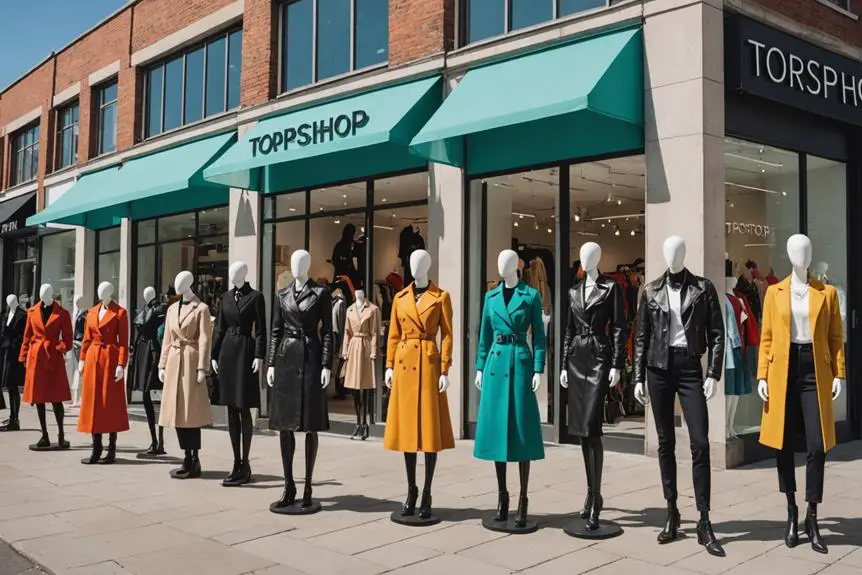

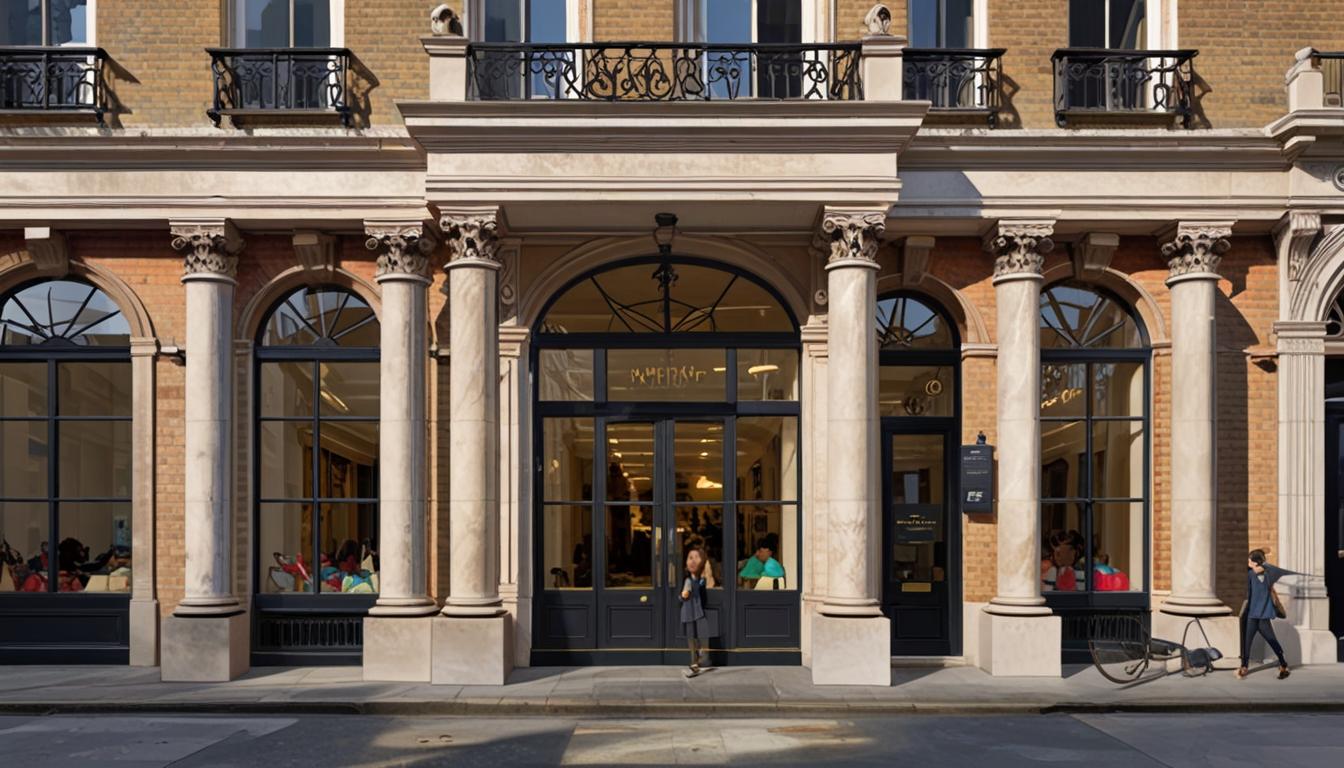
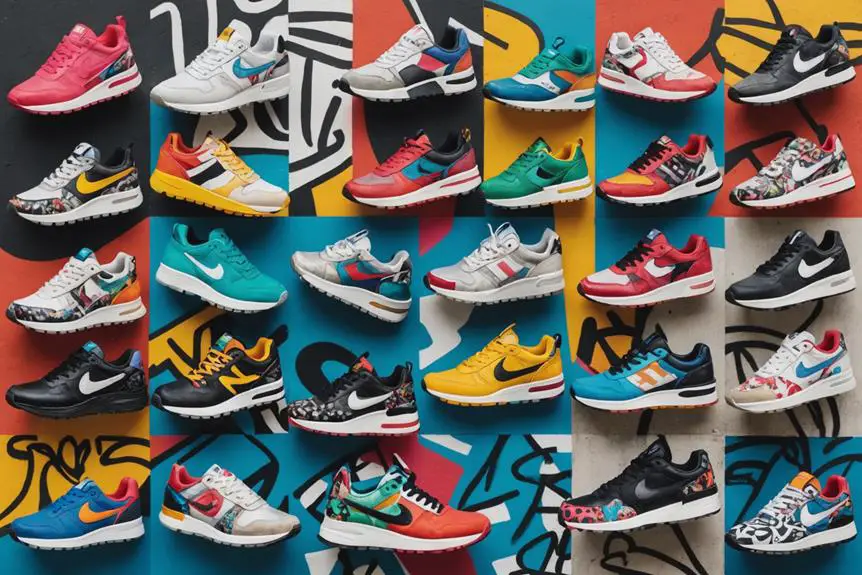

hi!,I love your writing very a lot! percentage we keep up a correspondence more approximately your post on AOL? I require an expert on this house to resolve my problem. Maybe that is you! Taking a look forward to peer you.